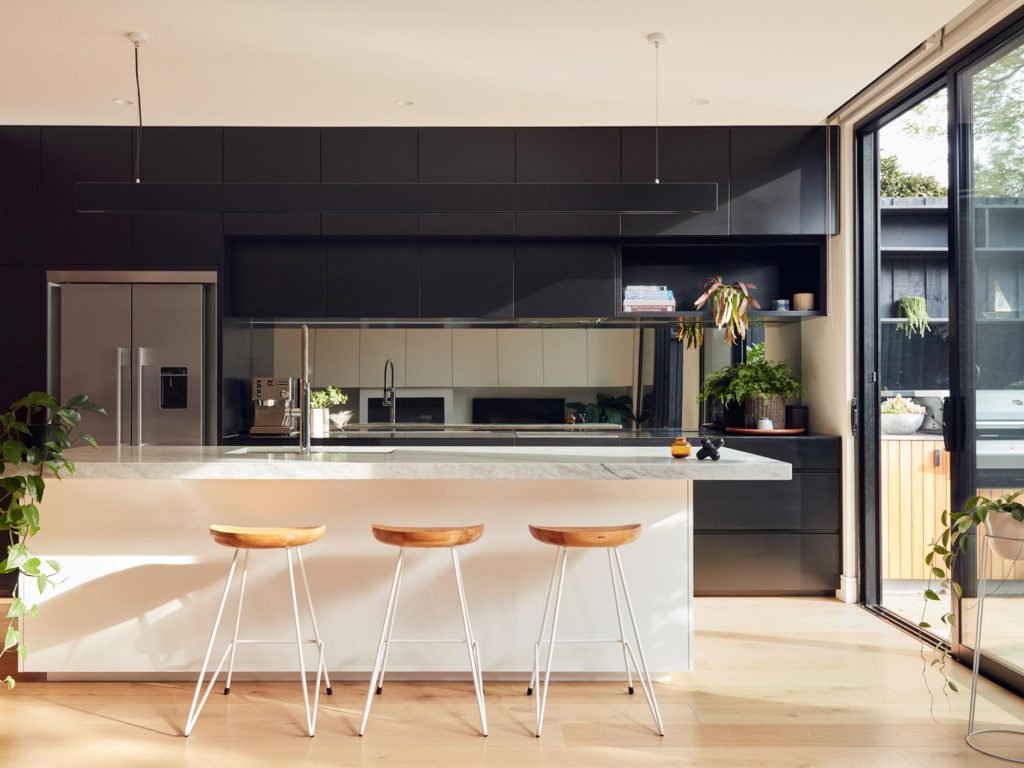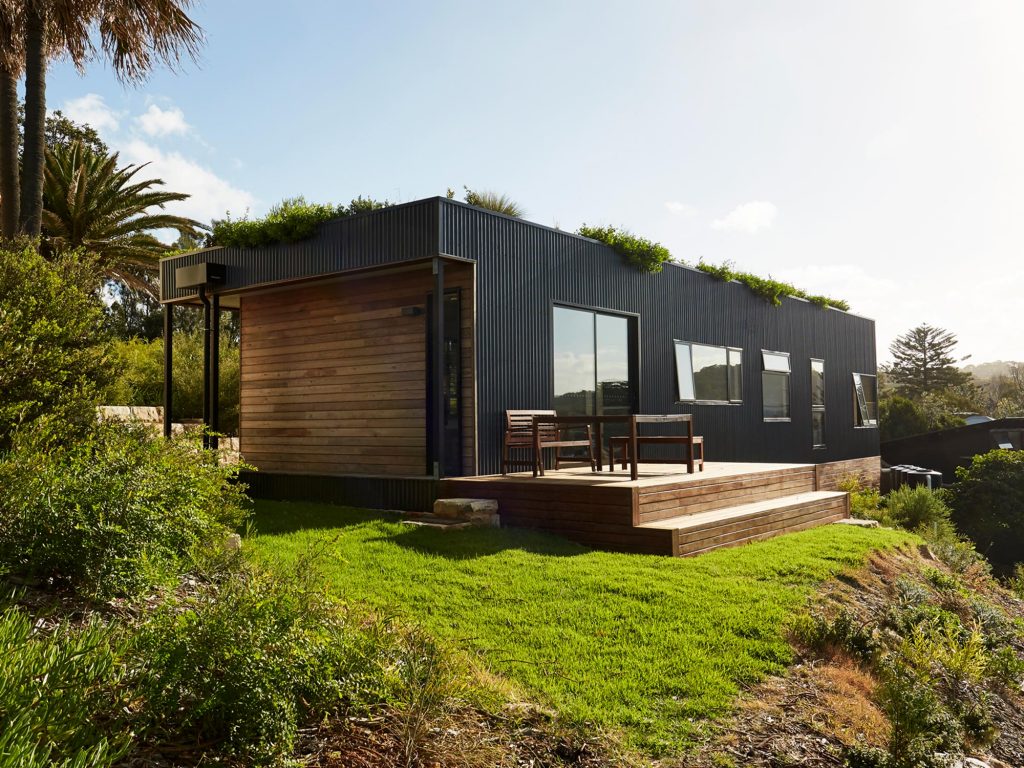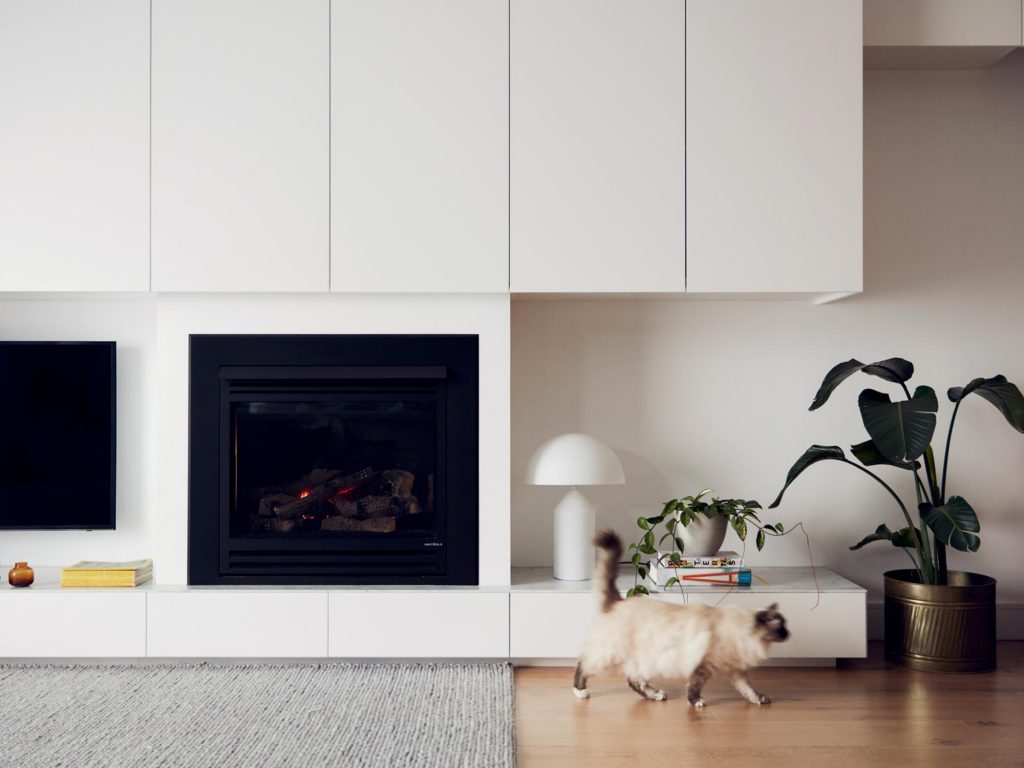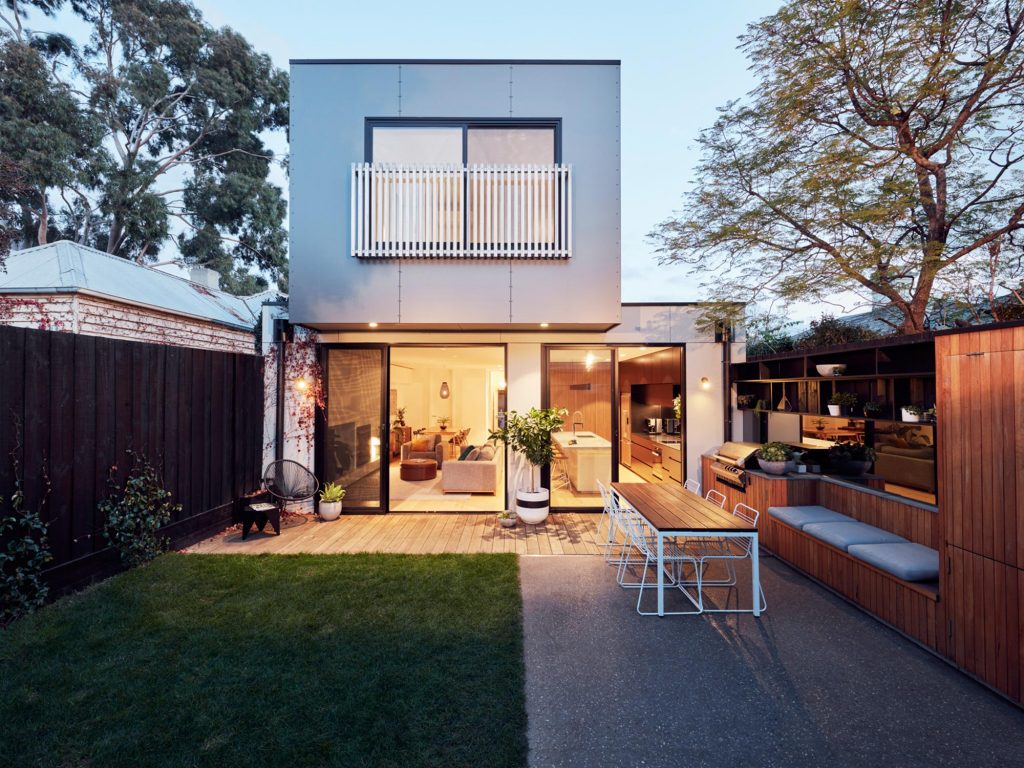25 March 2018
There’s been a bit of buzz about prefab housing lately, but what’s all the fuss about really?
Article written by Erinna Giblin for realestate.com.
Banner image: Vipp Shelter.
We’ve heard that modern pre-fab building is making waves in the building industry, but what are the real differences between a prefab build and a ‘normal’ build? And why should you consider going prefab for your next big project?
Fast build times.

Richmond Extension by Archiblox.
Although prefabricated homes seem futuristic, they have been built in Australia for hundreds of years.
Indeed some of our oldest standing buildings are prefab! One of Melbourne’s oldest still-standing homes, that of Governor Charles La Trobe, was prefabricated in England and brought to where it still stands in King’s Domain in 1839.
But, as you’d expect, the building materials have improved significantly – enabling average build-times to shrink to a fraction of what they are for other builds.
As the name suggests, prefabricated houses are largely constructed off-site. The pieces are then put together in a matter of weeks instead of many months, as is the case with traditional builds.
Bill McCorkell, founder of Archiblox, who built the home for Richard, says “through smart design and clever construction the prefabrication process minimises wastage and maximises efficiency to deliver a beautifully designed, cost-effective home.”
Archiblox quote a 12 week build-time for a standard three-bedroom home (depending on complexity), saving unnecessary delays that can accompany a traditional architect-designed build.
They’re moveable & re-arrangeable.

Avalon Beach House by Archiblox.
Prefab homes throughout history have enabled people to move to an area, set up their home, and then move on – if necessary.
It’s one of Richard’s favourite elements of his home: “I’m incredibly transient, so the thought of being able to take my home with me if we find another spot we’d like to be, is a comforting thought and an economical choice.”
So if you spot your dream plot of land, it could be as easy as picking up and moving your prefab home instead of worrying about finding a brand new place.
The benefit to this is not just that you can move locations, but you can re-arrange the home later on, if necessary.
Bill says: “Our prefabricated modular homes are like jigsaw puzzles, you can start small and overtime add more modules to create more space.”
They cost less.
Due to the nature of the factory build, costs can be brought down significantly.
There’s no need to worry about budget blow-outs that bad weather can bring or unexpected issues and errors that come with working on a building site.
Christine McCorkell from Archiblox says prices for standard modular homes start from $2,500 – $3,500 per square metre.

Richmond Extension by Archiblox.
The cost benefit is also seen at the end of the project with far fewer nasty surprises at the end of a modular build than that of a traditional build.
Less time building also means less time paying for short-term accommodation too.
Christine says: “The big reduction, lies in the soft or holding costs, such as rent and financing. For instance, homeowners only need to find alternative accommodation for a significantly shorter, pre-defined period – several weeks instead of months.
“This means far less outlay – upwards of $30,000 to $50,000 – to say nothing of the decreased disruption. If you need to borrow money, it is also for a much shorter period.”
They’re more sustainable.
Thanks again to the factory-build environment there’s less wastage with pre-fab building.

Richmond Extension by Archiblox.
The modern design helps too, according to Bill, who regularly create homes with eight-star energy ratings. “Our smart sustainable designs create prefabricated modular homes for longevity and healthy living,” he explains.
“We have much better resources to pick out building supplies for our design,” Bill says. “From the start, we designed this particular structure to maximise materials and minimise waste.”
“Archiblox designs homes and buildings to sit in harmony with your site.”
Consideration is also applied to optimising thermal mass, solar passive designs, double-glazing all windows and installing light-coloured roofing materials.
To view original article by realeastate.com click here.